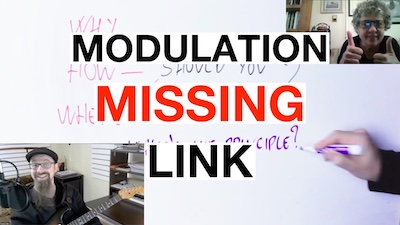MODULATION (Changing KEY):The MISSING Piece That Nobody Told You About


If there’s something that can be classified as ‘dark magic’ in music theory it’s modulations (i.e. key changes)
I mean, it’s not like they are impossible to do. Once you scrape away all the crazy jargon that musicians use and get down to the mechanics of it, changing key is not that hard.
Except… There is one thing that makes modulations sound great, and yet it’s not explained in any music theory book or any course online as far as I know…
… no ok, that’s not true.
There is indeed an out-of-print obscure piano manual from 1913 that mentions this “secret” in two paragraphs on the 3rd volume of the series. In a foot note.
(Seriously, that’s the best -and only - reference I found!)
So I bet that you’ve never read what I’m doing in this video anywhere else.
But what a difference it’s going to make!
So here’s the missing link on how to make your key changes sound great
Now that you know this absolutely vital piece of information, you are ready to make your modulations work the way they were intended.
Let’s go down to the nitty-gritty of harmony and see two simple - but really effective - ways to change key.
The first one uses the ever-popular diminished chords:
While this other one uses the rarer and zesty augmented chords:
It’s easy to miss the forest for the trees here. All these ideas may look disconnected from each other… they have no apparent relation. How are you going to remember them all?
Well, what if I told you that all these ideas (and several others) come from the same basic principles of harmony?
And what if I told you that you can find the principles of harmony explained directly on your guitar fretboard in the Complete Chord Mastery guitar course?
Check it out right now!
Did you find this video helpful? Do not miss the next Music Theory videos!
Subscribe to the MusicTheoryForGuitar YouTube channel by clicking the button below.